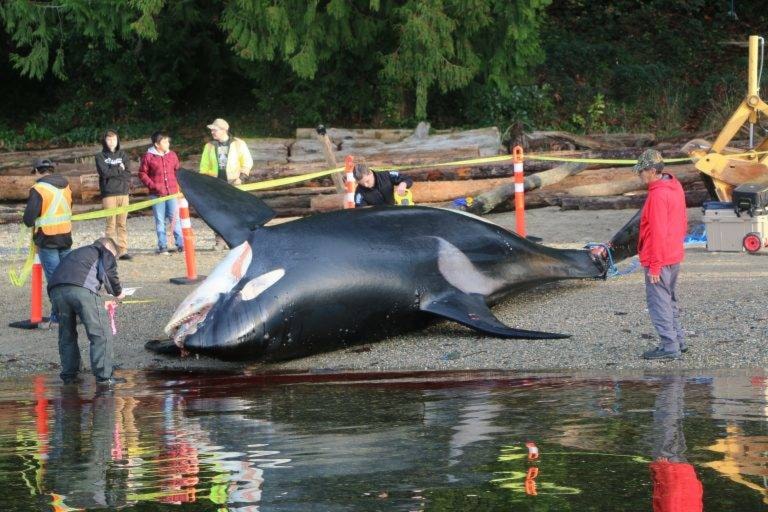Human interactions are the leading cause of untimely death among B.C.șŠĐßČĘŃĐŸżËùs killer whales, a new study suggests.
A team of marine mammal and orca specialists analyzed pathology reports of 52 killer whales stranded in Hawaii and the northeast Pacific, including the southern resident killer whales regularly spotted off the B.C. coast, finding the animals face a variety of threats, but the reemerging theme was human-caused in every age class.
șŠĐßČĘŃĐŸżËùIn British Columbia, we lost nine southern resident killer whales șŠĐßČĘŃĐŸżËù two adults, two subadults and one calf died from trauma. One was a confirmed propeller strike, with one adult and two subadults from suspected ship strikes,șŠĐßČĘŃĐŸżËù said lead author Stephen Raverty, a veterinarian pathologist with the BC Ministry of Agriculture and adjunct professor at the University of British Columbia stated in a press release. șŠĐßČĘŃĐŸżËùOne of these iconic species passed away from an infection secondary to satellite tagging. Another death was due to natural causes and the other two undetermined. Half of the southern killer whale deaths identified in this study were caused by human interactions.șŠĐßČĘŃĐŸżËù
READ MORE:
The study was based on orca deaths between 2004 and 2013, led by the British Columbia Ministry of Agriculture, and coordinated through the SeaDoc Society, a Washington-based program of the University of California. Raverty and coauthor Dr John Ford are adjunct professions at UBCșŠĐßČĘŃĐŸżËùs Institute of Oceans and Fisheries and Department of Zoology, respectively.
The report may offer one of the most comprehensive looks yet at the multitude of human and environmental threats affecting killer whales, and help inform strategies to better protect them. While human interactions play a key role, the researchers cautioned the findings indicate an understanding of each threat is critical for conserving orca populations.
șŠĐßČĘŃĐŸżËùThe results from systematic necropsies of dead killer whales in this review is unique and will establish critical baseline information to assess future mitigation efforts,șŠĐßČĘŃĐŸżËù Raverty said. șŠĐßČĘŃĐŸżËùThis work contributes to a better understanding of the impacts that ongoing human activities and environmental events have on killer whales.șŠĐßČĘŃĐŸżËù
Overall, of the 52 whales , the cause of death was determined for 42 per cent. Other causes include sepsis following a halibut hook injury, starvation from a congenital facial deformity, infectious disease and nutritional deficiencies.
șŠĐßČĘŃĐŸżËùNobody likes to think weșŠĐßČĘŃĐŸżËùre directly harming animals,șŠĐßČĘŃĐŸżËù said co-author and SeaDoc Society Director Joe Gaydos. șŠĐßČĘŃĐŸżËùBut itșŠĐßČĘŃĐŸżËùs important to realize that weșŠĐßČĘŃĐŸżËùre not just indirectly hurting them from things like lack of salmon, vessel disturbance or legacy toxins. ItșŠĐßČĘŃĐŸżËùs also vessel strikes and fish hooks. That humans are directly killing killer whales across all age classes is significant; it says we can do a better job.șŠĐßČĘŃĐŸżËù
READ MORE:
READ MORE:



